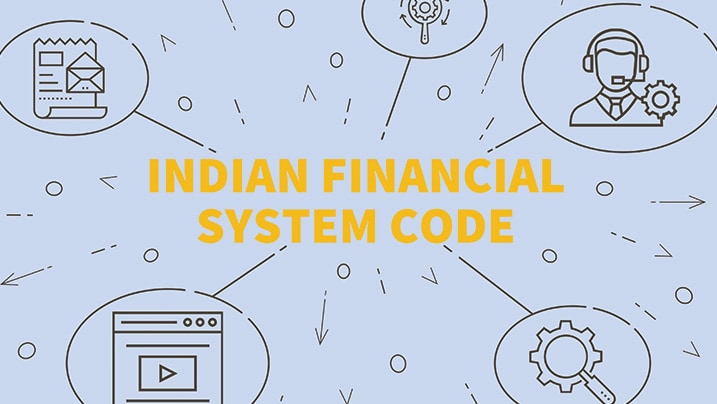CKYC Registry
-
Customer Service Contact us Service request Locate a branch
Find all the help you need
Scan the QR, get our app, and find help on your fingertips

Help CenterSupport topics, Contact us, FAQs and more
-
Login
Are you ready for an upgrade?
Login to the new experience with best features and services
-
Login
Are you ready for an upgrade?
Login to the new experience with best features and services
- Accounts
-
Deposits
IDFC FIRST Bank Deposits
View all Deposits -
Loans
IDFC FIRST Bank Loans
View all Loans - Wealth & Insure
-
Payments
IDFC FIRST Bank Payments
View all Payments -
Cards
IDFC FIRST Bank Cards
View all Cards - Blogs
- Corporate Account
-
Cash Management Services
IDFC FIRST Bank Cash Management Services
View all Cash Management Services - Supply Chain Finance
-
Corporate Lending
IDFC FIRST Bank Lending
View all -
Treasury
IDFC FIRST Bank Treasury
See more details - NBFC Financing
Support topics, Contact us, FAQs and more
- IDFC FIRST Bank Accounts
-
Savings Account
-
Corporate Salary
Account -
Senior Citizens
Savings Account -
First Power
Account -
Current Account
-
NRI Savings
Account -
TASC Institutional
Account -
Savings Account
Interest Calculator
- IDFC FIRST Bank Deposits
-
Fixed Deposit
-
Recurring Deposit
-
NRI Fixed Deposit
-
Safe Deposit Locker
-
FD Calculator
-
RD Calculator
- IDFC FIRST Bank Loans
-
Personal Loan
-
Consumer Durable
Loan -
Home Loan
-
Business Loan
-
Professional Loan
-
Education Loan
-
New Car Loan
-
Pre-owned Car Loan
-
Two Wheeler Loan
-
Pre-owned Two
Wheeler Loan -
Commercial Vehicle
Loan -
Gold Loan
-
Loan Against Property
-
Loan Against Securities
-
Easy Buy EMI card
-
Personal Loan
EMI Calculator -
Education Loan
EMI Calculator -
Home Loan
EMI Calculator
- IDFC FIRST Bank Wealth & Insure
-
FIRST Select
-
FIRST Wealth
-
FIRST Private
-
Mutual Funds
-
Sovereign Gold Bond
-
Demat Account
-
Term Insurance
-
Life Insurance
-
Health Insurance
-
General Insurance
-
Bonds
-
Loan Against
Securities -
Portfolio Management
Service
- IDFC FIRST Bank Payments
-
FASTag
-
Credit Card
Bill Payments -
UPI
-
Funds Transfer
-
Forex Services
-
Pay Loan EMI
- IDFC FIRST Bank Cards
-
Ashva :
Metal Credit Card -
Mayura :
Metal Credit Card -
FIRST Millennia
Credit Card -
FIRST Classic
Credit Card -
FIRST Select
Credit Card -
FIRST Wealth
Credit Card -
FIRST WOW!
Credit Card -
Deals
-
Debit Cards
-
Co-branded Cards
-
Credit Card
EMI Calculator -
FIRST Corporate
Credit Card -
FIRST Purchase
Credit Card -
FIRST Business
Credit Card
- Premium Metal Credit Cards
-
AshvaLifestyle1% Forex₹2,999
-
MayuraLifestyleZero Forex₹5,999
-
FIRST PrivateInvite Only
- Best for travellers
-
MayuraZero ForexMetal₹5,999
-
Ashva1% ForexMetal₹2,999
-
FIRST WOW!Zero ForexTravelLifetime Free
-
FIRST SWYPTravel OffersEMI₹499
-
FIRST Select1.99% ForexLifestyleLifetime Free
-
FIRST Wealth1.5% ForexLifestyleLifetime Free
-
Club VistaraTravelLifestyle₹4,999
-
IndiGo IDFC FIRST Dual Credit CardTravelLifestyle₹4,999
- Max benefits, Free for life
-
FIRST Classic10X RewardsShoppingNever Expiring Rewards
-
FIRST Millennia10X RewardsShoppingNever Expiring Rewards
-
FIRST Select10X RewardsLifestyle1.99% Forex
-
FIRST Wealth10X RewardsLifestyle1.5% Forex
-
FIRST WOW!RewardsTravelZero Forex
-
LIC ClassicRewardsInsuranceShopping
-
LIC SelectRewardsInsuranceShopping
- Reward Multipliers
-
AshvaLifestyleMetal₹2,999
-
MayuraLifestyleZero Forex₹5,999
-
FIRST ClassicNever Expiring RewardsShoppingLifetime Free
-
FIRST MillenniaNever Expiring RewardsShoppingLifetime Free
-
FIRST SelectNever Expiring RewardsLifestyleLifetime Free
-
FIRST WealthNever Expiring RewardsLifestyleLifetime Free
- Rewards & Credit on UPI
-
FIRST Power+FuelUPI₹499
-
FIRST PowerFuelUPI₹199
-
FIRST EA₹NVirtual1% Cashback₹499
-
FIRST DigitalVirtualUPI₹199
-
IndiGo IDFC FIRST Dual Credit CardUPITravelDual cards
- Fuel and Savings
-
FIRST PowerRewardsUPI₹199
-
FIRST Power+RewardsUPI₹499
-
LIC ClassicRewardsInsuranceShopping
-
LIC SelectRewardsInsuranceShopping
- Express and Flaunt
-
AshvaMetal1% Forex₹2,999
-
MayuraMetalZero Forex₹5,999
-
FIRST SWYPEMIOfferMAX₹499
-
FIRST MillenniaRewardsShoppingLifetime Free
- FD Backed rewarding Credit Cards for all
-
FIRST EA₹NVirtualCashback₹499
-
FIRST WOW!Zero ForexTravelLifetime Free
-
CreditPro Balance TransferTransfer & SaveReduce InterestPay Smartly
- IDFC FIRST Bank NRI Forex Solutions
-
Send money to India-Wire transfer
-
Send money to India-Digitally
-
Send money abroad
-
Max Returns FD (INR)
- IDFC FIRST Bank MSME Accounts
-
Platinum Current
Account -
Gold
Current Account -
Silver Plus
Current Account -
Merchant Multiplier
Account -
Agri Multiplier
Account -
TASC Institutional
Account -
Dynamic Current
Account -
World business
Account -
First Startup
Current Account
- IDFC FIRST Bank Business Loans
-
Business Loan
-
Professional Loan
-
Loan Against Property
-
Business Loan for Women
-
Working Capital Loan
-
Construction Equipment Loan
-
Machinery Loan
-
Healthcare Equipment Loan
- IDFC FIRST Bank Business Solutions
-
Payment Solutions
-
Tax Payments
-
Doorstep Banking
-
Point of Sale (POS)
-
Escrow Accounts
-
NACH
-
Payment Gateway
-
UPI
-
Virtual Accounts
-
As per amendment in the Income Tax Rules, PAN or Aadhaar are to be mandatorily quoted for cash deposit or withdrawal aggregating to Rupees twenty lakhs or more in a FY. Please update your PAN or Aadhaar. Kindly reach out to the Bank’s contact center on 1800 10 888 or visit the nearest IDFC FIRST Bank branch for further queries.
-
-
Most Searched
Sorry!
We couldn’t find ‘’ in our website
Here is what you can do :
- Try checking the spelling and search
- Search from below suggestions instead
- Widen your search & try a more generic keyword
Suggested
Get a Credit Card
Enjoy Zero Charges on All Commonly Used Savings Account Services
Open Account Now
IFSC stands for Indian Financial System Code. The Reserve Bank of India (RBI) utilises the IFSC code for electronic money transfers between banks, as it helps them verify the transfer of resources. No National Electronic Funds Transfer (NEFT) transactions can take place without the IFSC code.
What is an IFSC code?
An IFSC code serves as a unique identification code for each bank branch in India. This code comprises 11 characters. The first four characters represent the bank's name, while the last six signify the branch. A fifth character, usually zero, acts as a space between the two. People use this code mainly for electronic money transfers.
For example, during NEFT or RTGS transactions, you will find that this code acts as an address for the bank branch. RBI mandates this system for accurate, speedy transactions. While making a transfer, you must provide the correct code. Each IFSC code number stands exclusively for a specific bank branch. No two branches (even of the same bank) can have the same IFSC code, making it a crucial part of financial operations.
Structure of an IFSC Code:
- First Four Characters: Represent the bank.
- Fifth Character: Always '0' and reserved for future use.
- Last Six Characters: Identify the specific branch.
READ MORE
How does IFSC CODE work?
Now that you know the IFSC meaning, wondering how it works? When you initiate an electronic fund transfer, the sender's bank utilises the IFSC code. It identifies the beneficiary's bank and the specific branch. The beneficiary's bank receives this transaction request and checks the code. This verification confirms the transaction details. It then credits the money to the correct account. An accurate code is important because a wrong IFSC can lead to transaction failures or misdirection of funds.
It may be just one small part of the vast network that facilitates electronic payments and banking transactions, but its importance cannot be ignored. As each code corresponds to a specific bank branch, it ensures that every transaction reaches the right destination and remains distinct, making record-keeping, and tracking of transactions more efficient.
Where can I find my IFSC code of bank branch?
Cheque leaf:
Check the top left corner of any cheque leaf to find the IFSC code. You will see the branch's full address followed by your bank IFSC Code.
Passbook:
Your passbook holds more than just your transaction history. Go through its front sheet. Along with your account details, it holds your branch's details. Among this information, you can find the IFSC code.
RBI website:
Access the official website of the Reserve Bank of India. Navigate to the 'IFSC codes' tab. Select your bank from the list, input your branch name, and get your code. If you do not remember the branch name, no problem. Upon selecting your bank, the website will display a list of all branches with their respective IFSC codes.
Bank website:
Today, almost all banks offer a branch locator tool on their official websites. Enter your branch's name or location, and the website will display your branch's IFSC code along with other branch details like address, phone number, etc.
When will I need my IFSC code?
The IFSC number is used by the Real Time Gross Settlement (RTGS) and National Electronic Fund Transfer (NEFT) systems to transfer cash in bank accounts in India. As a result, the IFSC number is required every time money is transferred from one bank to another. You will need the beneficiary's bank name and account number, along with the IFSC number, to transfer funds. Always keep your IFSC number handy for swift banking experiences. By using correct details, you facilitate smooth financial exchanges and minimise delays.
An IFSC code number is vital for payments in India. Every bank, including IDFC FIRST Bank, requires it for transferring money.
What is the importance of the IFSC code?
The IFSC code is a pillar of the banking industry. It is important because:
- It aids in the identification of a specific bank branch.
- Helps in the elimination of payment transfer errors.
- Used for making NEFT, RTGS, and IMPS payments.
As you can see, its adoption guarantees smoother banking operations, enables swift transactions, and minimises risks for individuals as well as businesses.
Difference between IFSC Code, MICR Code, and SWIFT Code
Bank IFSC code
It is allocated by RBI to identify each bank and its branch. This code enables efficient and error-free electronic fund transfer between banks across the nation. Also, it helps in streamlining and automating various banking processes like NEFT, RTGS, and IMPS, which are used for interbank fund transfers.
MICR code
Magnetic Ink Character Recognition (MICR) code is a technology that enables the processing of cheques electronically with complete accuracy. This is essential in avoiding errors as it is a printed code on the bottom of cheques that can be read only by magnetic ink reader/sorter machines.
It is a nine-digit code and comprises three parts:
- The initial three digits signify the city, aligning with India's postal PIN codes.
- Middle digits denote the bank.
- The last three digits represent the branch.
SWIFT code
Society for Worldwide Interbank Financial Telecommunications (SWIFT) code finds its use in international transactions and ensures the safe transfer of money between banks across borders. Anytime you intend to send or receive money internationally, a SWIFT Code becomes essential. A SWIFT code contains the bank code, country code, location code, and branch code. Consisting of 8 or 11 characters, it uniquely identifies banks worldwide.
Modes of online money transfer using IFSC code (NEFT, RTGS, IMPS)
NEFT functions as a system where transactions are processed in batches during designated hours. Using a bank IFSC code number helps pinpoint the beneficiary bank branch, making transfers seamless.
RTGS caters to high-value transactions, typically above ₹2 lakh. The system processes these transfers instantaneously, leveraging the code to accurately route the funds.
Immediate Payment Service (IMPS) stands as a 24/7 service, making it possible to transfer money anytime, even on bank holidays. It is ideal for quick and immediate transactions. Just like NEFT and RTGS, IMPS relies on the IFSC number to guide the transaction to the appropriate bank branch.
How are NEFT and IFSC code related?
The NEFT system is a nationwide system that allows individuals, businesses, and corporations to make payments to anyone having an account at any branch in the country. Because the money is not sent in real time and is paid in batches, NEFT transfers are sometimes known as e-cheques. A NEFT payment cannot be made without the IFSC number. It is with the aid of the IFSC number the money finds its destination from one bank to another.
Given its importance in ensuring the accuracy and security of NEFT money transfers, RBI has issued every bank branch in India a unique IFSC code number.
How are RTGS and IFSC code related?
RTGS is described as the continuous (real-time) settlement of individual financial transfers on an order-by-order premise (without netting). You will need the IFSC code to find the branch where you will transfer payments using RTGS.
Without the code, finding the correct bank branch for the transaction could become a challenge. As a result, RTGS and IFSC numbers have become integral components of electronic fund transfers.
The former ensures rapid transaction processing, while the latter provides a specific destination address. Together, they streamline the electronic funds transfer process in the country, making it easier to facilitate quick and accurate transactions for individuals and businesses alike.
Importance of the IFSC code in IMPS transfer
Immediate Payment Service (IMPS), which is also known as Interbank Mobile Payment Service, employs IFSC codes to provide 24x7 fund transfer services. The National Payments Corporation of India (NPCI), which is an entity that supervises retail payments in the country, provides the IMPS transfer service. Any money transferred using IMPS transfer immediately reaches the beneficiary’s bank account. The importance of the bank IFSC code in IMPS transactions becomes clear: it streamlines the process, reduces errors, and allows for real-time, accurate transfers.
Before making a new payment on the IDFC FIRST Bank website or Mobile Banking app, you will need the beneficiary’s IFSC code. Once you enter the code, the IDFC FIRST Bank website or app detects the branch where the account was opened.
Frequently Asked Questions
1. Who issues IFSC codes?
The Reserve Bank of India (RBI) issues the IFSC code number to each bank branch in the country. This unique 11-digit alphanumeric code helps in identifying specific branches during electronic fund transfers. In This way, RBI standardises and simplifies the transfer process across the vast network of bank branches in the country.
2. Is the IFSC code important?
IFSC code is a prerequisite for seamless and hassle-free banking operations. It helps to identify the bank and branch holding the recipient's account which is why many banking transactions, like NEFT and RTGS, demand this code. It ensures precision in fund transfers, reduces the risk of errors and fraud, and promotes transparency and accountability.
3. Is it safe to give the bank the IFSC code?
Giving out your bank IFSC code is safe, as it's required by the other party to send you money. Sharing both the account number and IFSC only allows a person to deposit money into your account. Without additional authentication, they cannot withdraw or misuse funds. However, always ensure you are sharing information with trustworthy entities.
4. Can a bank have two IFSC codes?
No two branches, even if they belong to the same bank, share the same code. This ensures distinct identification for every branch, facilitating smooth electronic fund transfers. So, while a bank can have multiple IFSC codes for its various branches, each specific branch possesses only one unique IFSC code.
5. Where is the IFSC code?
You can find this 11-digit alphanumeric code on bank account statements, chequebooks, and online banking platforms of the respective bank. Websites of banks and RBI also display these codes. You can easily find the IFSC code for your specific branch through these online resources.
Disclaimer
The contents of this article/infographic/picture/video are meant solely for information purposes. The contents are generic in nature and for informational purposes only. It is not a substitute for specific advice in your own circumstances. The information is subject to updation, completion, revision, verification and amendment and the same may change materially. The information is not intended for distribution or use by any person in any jurisdiction where such distribution or use would be contrary to law or regulation or would subject IDFC FIRST Bank or its affiliates to any licensing or registration requirements. IDFC FIRST Bank shall not be responsible for any direct/indirect loss or liability incurred by the reader for taking any financial decisions based on the contents and information mentioned. Please consult your financial advisor before making any financial decision.
The features, benefits and offers mentioned in the article are applicable as on the day of publication of this blog and is subject to change without notice. The contents herein are also subject to other product specific terms and conditions and any third party terms and conditions, as applicable. Please refer our website www.idfcfirstbank.com for latest updates.























